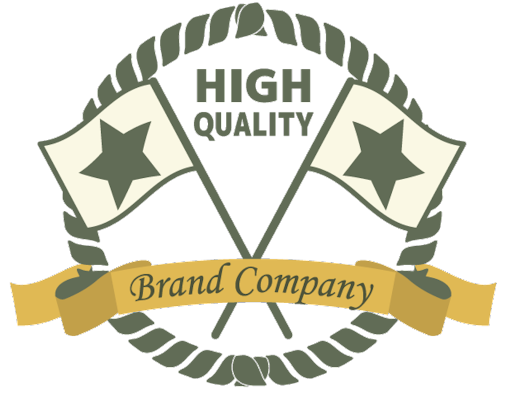Veromi is, without a doubt, one of the most powerful data and background search tools available today. Veromi has built this relationship by delivering exceptionally precise data from the same sources as the government and other institutions.
Veromi allows users to search through billions of public information and databases, which prompts the question: is this the best we have?
To provide a response, we’ve produced a list of more options that function just as well. So keep reading!
1. Spokeo
Website link: https://www.spokeo.com/
It gathers information from reputable sources and organizes it into digestible bits. It has around 3.9 billion historical records, 600 million judicial records, 89 million company data, and a whopping 6 billion consumer records to make sure you don’t miss anything.
2. Checkmate
Instant Checkmate, as the name implies, assists you in learning the most relevant data about people you know. With the help of this app, you can get the necessary background record.
It includes extensive background information, and looking up phone numbers is a breeze when you have this platform at your disposal. It’s also available on mobile devices, so you can look for someone from anywhere.
3. FindOutTheTruth
FindOutTheTruth is a low-cost platform that operates as a private investigator to assist you in learning all you need to know about someone, including criminal records, employment history, and medical history.
The best part is that you don’t need a subscription to do this. Payment is made per search, which may or may not be advantageous to you depending on how many searches you want to conduct.
It’s an all-in-one answer for all of your search warrant needs. Our research team draws on the hands-on knowledge of investigators with years of investigative and risk management experience, as well as extensive collegiate and post-graduate coursework.
The nicest part about this site is that there are no membership fees or memberships; you only pay per search. When compared to other similar platforms, it is quite quick and strong, with billions of records available all around the world. It provides step-by-step instructions on how to use this sophisticated platform to order an investigative background check quickly and efficiently.
4. Intelius
Intelius has a highly secure search mechanism that prevents others from learning about your searches. It is commercial software, and various plans provide you with various options.
5. People Search Now
Other fantastic people search engine that allows you to contact friends and family, as well as to conduct background checks on people, all for free.
It has over 3 billion public records with photos, and users may search for others by phone number, email address, or name. It features a really simple and user-friendly UI, and honestly, you can’t ask for anything more.
6. Fast People search :
A free web-based application with cutting-edge technology and public records of billions of individuals all over the world isn’t usually free but lucky for you, Fast People Search does all of that for no cost.
It even tells you if someone is contacting you on a reserve phone and allows you to look up who is phoning you on a reserve phone.
7. People Smart
People Smart features a user-friendly design that makes you feel confident in the people you hire and allows you to reconnect with old friends. It comes in two flavors: free and paid.
The subscription version gives you access to criminal records and other vital information, while the free version handles the essentials. It features a highly user-friendly UI that works well.
8. Whitepages
Whitepages is a phone directory application that allows users to manage and track phone numbers. It allows users to track and identify recipients as well as to conduct a background check.
It includes detailed documentation and information on topics like criminal history, relatives, age, business information, and property information.
9. Pipl
Pipl is a search engine that assists organizations in verifying candidates and preventing theft and financial fraud. It has over 3 billion profiles and millions of users. To locate a person, simply input their contact information, including phone numbers, social media usernames, and email addresses.
Users can access the entire site with the help of simple guidelines and tutorials.
10. Truth Finder
The Truth Finder assists users in locating well-documented and classified information such as arrest records, weapon permits, medical histories, and more.
Only the premium version is accessible, and it can be used on mobile devices as well. Users can even use the platform to search the dark web for essential information, ensuring that accuracy is not jeopardized.
11. PeopleFinders
People Finders.com is a website that helps people find each other. Public Records & Internet People Search Through a large database collection, it is possible to find people everywhere in the United States.
People Finders is another reputable internet tool for finding individuals. Its primary purpose is to locate old acquaintances and pals, but it also includes features such as criminal records, company data, and phone lookups.
It’s also free to use, so give it a shot, and if you’re interested in streaming online, check out our latest blog on Streaming Software.
It is a Pipl replacement that includes all of the main features as well as some new tools and capabilities. The best part about this platform is that it is completely free, and you can use it from any location on the planet. The key feature of PeopleFinders is its straightforward interface, which includes functions like no login, finding places, current news, finding contacts, and much more.
12. USA People Search
Public Records, Find People
It instantly returns search results that include up to 20 years of address data, phone numbers, and birth dates. There are proper checks available with criminal records from all throughout the country.
USA People Search includes a comprehensive database of people living in the United States that you may search without restriction. This platform allows you to obtain correct background information, such as a person’s full name, exact age, social username, phone number, and email address.
Unlike all of the other major platforms, it also offers a feature that allows you to search for criminal records and share them directly with others. The best thing about this platform is that it has a user-friendly layout that doesn’t require any particular abilities to locate background information; simply type in a name, phone number, or email address in the search box and you’ll have an exact result in a matter of seconds.
13. Lycos Search
Enter a person’s or a company’s name or location to see their address and phone number.
14. Yahoo! People Search
Yahoo! People Search allows you to look up email accounts, contact details, and other personal details for people you’re looking for.
15. iSearch
With iSearch, you can find people online for free using semantic web technology. Reconnect with friends and relatives by using a crowdsourced people search tool.
16. Anywho
Anywho is an internet service that allows you to quickly locate people, businesses, and locations anywhere on the planet. The site was developed specifically for businesses that wish to target a certain demographic, identify businesses, and so on. You can use this to discover any contact information depending on the address and phone number of the person you find. There’s also the option of searching for information based on the area code or the zip code.
The site’s interface is straightforward, requiring only first name, last name, city, and state. After entering all of the information, simply press the find button; it will display all of the results in a fraction of a second, and you can freely import and copy as many as you want. The site may also be used as a reverse phone lookup tool and a yellow pages directory to learn more about a phone number.
17. Infotracer:
Infotracer is a public record search engine that allows you to seek out any information about someone you’re interested in on the internet. You can obtain information such as phone numbers, contact information, gender, and name. The Infotracer will give you details about the person’s assets, including their business, automobiles, planes, and boats. You may also look up more information about investments.
The software is simple to use; all you have to do is perform a simple search, and you’ll have favourable results in no time. In the report part, you’ll also see criminal records, including disposition data, police report details, probation information, and more. The Infotracer is the best way to find out information about the individual you’re looking for, including accurate court, marriage, and other details.
18. Who’s Easy:
Who Easy is a smart piece of software that allows you to trace phone numbers and obtain immediate and automatic results. You will receive complete information about the owner of the phone number, including their name, address, and other details. With the easy reserve phone lookup, Who Easy is making things more accessible by providing a simple technique for contacting the phone and determining who owns it.
The app eliminates all obstacles that prevent you from wasting time going through old phonebooks or contacts. All you have to do is type the information into the search bar, and the system will return results for the phone number in a flash. You have data on every number, whether it’s a landline or a cell phone.
19. eVerify:
eVerify is a web-based program that allows companies to verify their employees’ eligibility. The software uses electronic matching information provided by the employees to verify the identification and employment eligibility of newly hired personnel. You’re always up to date on what’s going on right now and what’s coming up soon.
The programmer easily meets your compliance needs, such as establishing identity and resolving compliance difficulties, while also alerting employers to non-compliant activity. Compliance help is provided to all employees in the form of emails, phone calls, desk checks, and site visits. In addition, the platform provides data for in-depth analysis, such as performance and consumption statistics.
20. Location Sms:
Location SMS is a service that allows users to track down their location by texting the phrase “Where are you?” to their phone. The app will find the phone and send the needed coordinates or location to the number from where the text was sent. Furthermore, even if the cell network is down, the location is detected and the text is sent automatically.
Even if users have misplaced their phone in the house and it is set to do not disturb mode, they can locate it by sending a ‘Lost’ SMS to their phone, which will ring at maximum volume. When it comes to tracking, users can also select who can send SMS to their phones. Users can set up a Geo-fence function using Location SMS, which will automatically send a text to their location.
21. Information.com
Website Link: https://information.com/
Information.com is one of the few websites that live up to its name. The website contains a lot of information about people, and it all comes from thousands of verified public records databases. With Information.com, the information flies fast too. After entering someone’s information, you’ll learn about their relatives, addresses, social media accounts, and criminal background.Information.com is also one of the few websites that’s optimized for mobile use. It has fast load speeds on personal computers and smartphones, and functions the same on both. Plus, it benefits from a newer user interface that’s hassle-free to use – regardless of if you’ve used a people search tool before.
Conclusions:
That’s all there is to it. If you want to move from Veromi for any reason, here is a list of 11 useful alternatives. A few platforms are completely free to use, while others are only partially free.
The majority of such software is flourishing in the IT business. You should keep an eye out for any additional additions that are planned in the coming years.
Appeio is a tech enthusiast and gamer who loves to write about the latest news and trends in the industry. He has been writing for over 5 years and has published articles on a variety of websites, including TechCrunch, IGN, and GameSpot. He is passionate about sharing his knowledge with others and helping them stay up-to-date on the latest tech news. In his spare time, he enjoys playing video games, watching movies, and spending time with his family.



![Best Samsung 5G Phones Under ₹30,000 in India – Latest Models & Reviews[May, 2025] Samsung A35 5g](https://appeio.com/wp-content/uploads/2025/02/Samsung-smartphones-under-30k-356x220.webp)
![Top 4 Best Samsung Phones under 40000 [April,2025] Top 4 Best Samsung Phones under 40000](https://appeio.com/wp-content/uploads/2021/05/Top-4-Best-Samsung-Phones-under-40000.jpg)







